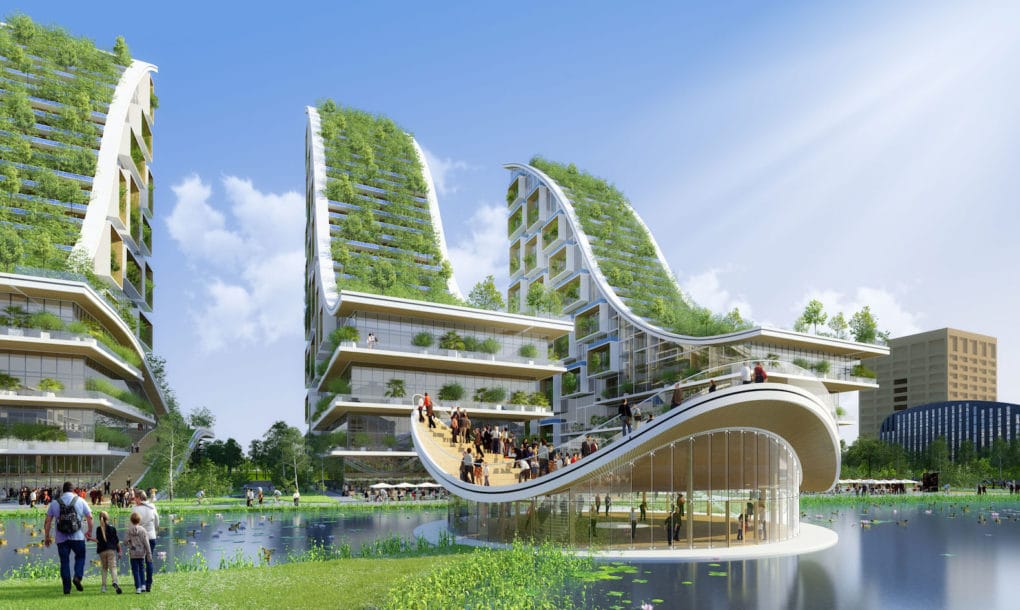In an era defined by environmental concerns and the urgent need for sustainable development, the construction industry stands as both a significant contributor to environmental degradation and a potential solution through innovative green building techniques. As the world grapples with climate change and resource scarcity, architects, engineers, and construction professionals are embracing cutting-edge methods that prioritize sustainability without compromising on aesthetics or functionality. These pioneering approaches are not just trends; they are paving the way for a greener, more sustainable future in construction.
The Urgency of Sustainable Construction
Before delving into the innovative green building techniques, it’s crucial to understand why sustainable construction is a pressing need. Traditional construction methods often lead to excessive resource consumption, energy inefficiency, and harmful emissions. According to the World Green Building Council, the built environment is responsible for nearly 40% of global energy-related carbon dioxide emissions. This staggering statistic underscores the importance of adopting eco-friendly practices in the construction industry.
1. Passive Design and Net-Zero Buildings
Passive design principles have gained traction as a cornerstone of green building. This approach involves designing buildings to optimize natural resources for heating, cooling, and lighting, thereby reducing the need for energy-intensive systems. Net-zero buildings take this concept a step further by producing as much energy as they consume over a year. This is achieved through a combination of energy-efficient design, on-site renewable energy generation (such as solar panels), and energy storage systems.
2. Green Materials and Circular Economy
Innovative green building techniques extend to the materials used in construction. The shift towards sustainable materials involves choosing options with lower carbon footprints, such as recycled steel, bamboo, reclaimed wood, and low-impact concrete. Moreover, the circular economy concept promotes resource efficiency by reusing and recycling materials, reducing waste sent to landfills, and minimizing the extraction of new raw materials.
3. Prefabrication and Modular Construction
Prefabrication, or off-site construction, is gaining momentum for its ability to reduce construction waste, minimize site disturbances, and accelerate project timelines. By manufacturing building components in controlled environments, there’s less material wastage and a lower impact on the surrounding ecosystem. Modular construction takes this a step further by assembling prefabricated modules on-site like building blocks, further streamlining the construction process and reducing environmental disruption.
4. Green Roofs and Walls
Green roofs and walls are innovative solutions that combine architecture with nature. Green roofs involve planting vegetation on building rooftops, providing benefits such as improved insulation, reduced urban heat island effect, and stormwater management. Green walls, or vertical gardens, offer similar advantages while maximizing limited urban space. These techniques enhance biodiversity in urban areas and contribute to air quality improvement.
5. High-Performance Insulation
Energy-efficient buildings heavily rely on insulation to maintain consistent indoor temperatures, reducing the need for excessive heating or cooling. Innovations in insulation materials, such as aerogels and vacuum insulation panels, provide high thermal resistance with minimal thickness. This not only improves the energy efficiency of buildings but also allows for more interior design flexibility.
6. Smart Technologies and Building Automation
The integration of smart technologies and building automation systems enhances a building’s energy efficiency and occupant comfort. Sensors, smart thermostats, and advanced lighting control systems ensure that energy is used only when and where it’s needed. Furthermore, data collected from these systems can inform ongoing improvements in building performance.
7. Water-Efficient Systems
Water scarcity is a growing concern in many regions. Green building techniques address this by implementing water-efficient plumbing fixtures, rainwater harvesting systems, and greywater recycling. By minimizing water waste and maximizing reuse, these techniques contribute to both sustainable construction and responsible water management.
8. Zero-Energy Communities
Beyond individual buildings, the concept of zero-energy communities envisions entire neighborhoods that produce as much energy as they consume. These communities often incorporate renewable energy sources, energy storage systems, and interconnected microgrids. By taking a holistic approach to sustainable construction, zero-energy communities set a new standard for eco-friendly urban development.
9. Adaptive Reuse and Renovation
Sustainability isn’t just about new construction; it also involves repurposing existing structures. Adaptive reuse and renovation give old buildings new life while conserving resources. Converting old factories into loft apartments, for example, minimizes the need for new materials and reduces the environmental impact associated with demolition and new construction.
10. Life-Cycle Assessment
Lastly, life-cycle assessment (LCA) is a critical tool for evaluating the environmental impact of a building from its conception to its demolition. By considering factors such as material production, construction, operation, maintenance, and eventual disposal, LCA helps identify areas for improvement and informs decision-making for more sustainable construction practices.
In conclusion, innovative green building techniques are revolutionizing the construction industry by prioritizing environmental sustainability without compromising on functionality, aesthetics, or comfort. As the world races to combat climate change and conserve resources, these pioneering approaches are setting the stage for a future where buildings are not just structures, but integral components of a healthier planet. By adopting these techniques and advocating for sustainable construction practices, we can pave the way for a more sustainable and resilient built environment.

